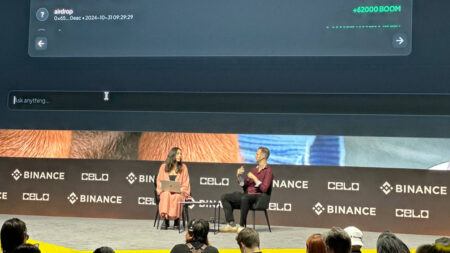Only a week after the two near-simultaneous hard fork upgrades, Constantinople and St. Petersburg, were successfully activated, the rate at which new blocks are being generated on the Ethereum network has increased significantly.
Etherscan: 1,500 More Blocks a Day Generated On Ethereum After Forks
Data from Etherscan shows that the 24-hour block count on the Ethereum network has increased by more than 1,500 blocks – after the codebase modifications associated with the Constantinople and St. Petersburg forks went live.
The substantial increase in the rate of blocks being mined on the Ethereum blockchain can be attributed to the changes initiated with Ethereum Improvement Proposal (EIP) 1234 – which was part of four other EIPs that were added to Ethereum’s codebase at the time of last week’s upgrade.
Notably, EIP 1234 contains code which disabled Ethereum’s “difficulty bomb” for the next 12 months, so that users of the smart contract platform become more inclined towards transitioning to a Proof-of-Stake (PoS)-based consensus protocol (as Ethereum currently uses a Proof-of-Work based consensus mechanism).
Ethereum’s developers will reportedly be making gradual changes to the decentralized application (dApp) platform’s codebase which are aimed at increasing the network’s mining difficulty over time. As mining difficulty on Ethereum goes up, the block generation times are also expected to slow down considerably. At present, the Ethereum chain is producing a new block about every 19 seconds – which is significantly slower than the 14 second block times before the hard forks.
Istanbul Scheduled To Go Live In October 2018
Referred to as Istanbul, the next Ethereum hard fork will reportedly activate a new set of EIPs. Although the exact timeline for Istanbul has not yet been announced, former Ethereum Core developer Afri Schoedon noted in January 2019 that Istanbul may go live in October 2018.
Commenting on how it’s becoming more challenging to plan hard forks for Ethereum, as the network grows in size to include additional users, developers, and companies, MyCrypto CEO Taylor Monahan told Coindesk:
I’m always worried whenever there’s a fork because there’s so many moving pieces. You have the miners. You have the hardware or the nodes. You have Geth, Parity, Harmony and all the different client softwares. You have the exchanges, wallets and everything in between. There’s a lotTh of places where things can go wrong.
Smart Contract Message Calls On Ethereum Remain The Same After Forks
Explaining why she thinks the latest Ethereum hard forks may have been activated without too many issues, Monahan said that there had been several previous (unsuccessful) attempts to launch the forks. These failed attempts may have helped Ethereum’s community become more prepared to handle updates to the world’s largest blockchain network for deploying dApps.
According to Alethio, a blockchain analytics firm, there have been no significant changes in the average transaction volume on the Ethereum network since the St. Petersburg and Constantinople upgrades went live. The number of smart contract message calls issued over the Ethereum network have also remained fairly constant since the updates were activated.
Small Group Of Miners Still On The Old Chain
Ethereum’s hashrate, which is used to measure the computational resources required for miners to produce new blocks, has also remained about the same since the hard forks were initiated. This suggests that most Ethereum miners did upgrade theirsoftware to the latest versions after the forks.
Currently, Ethereum’s hashrate stands at 132,986 GH/s and miners who’ve not upgraded to Ethereum’s latest software have a total hashrate of only 1,777 GH/s. There have reportedly been at least 19 blocks mined on the Ethereum chain that did not incorporate the hard fork updates – which has resulted in a “waste of money”, Ethereum Foundation security lead Martin Holst Swende noted.
Swende also mentioned:
A few ethereum miners are wasting energy on [an] old chain. Please update ASAP.









